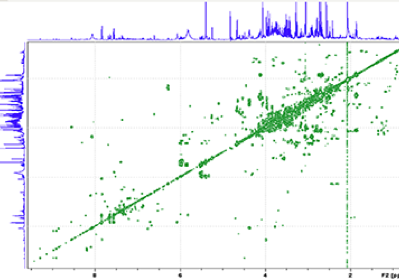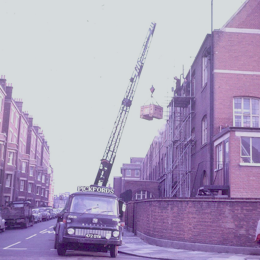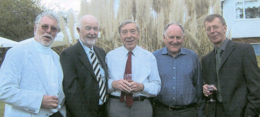History of the NMRDG
1964 – 2009
The NMRDG initially had a relaxed and perhaps disorganised attitude to its outlook and organisation. It was a group of people with a common interest who simply gathered together from time to time to discuss each and every aspect of the relatively new and fast-growing field of NMR, from basic physics via interpretation of spectra to spectrometer modifications and applications to chemistry.
For a considerable period of time, the NMRDG was independent, and this allowed it to run its own affairs, without the administrative burden of a large Society, and to have its own rules and list of members. In 1966, following a good deal of discussion, the NMRDG became a semi-autonomous group within the Chemical Society (CS). Some reservations had been expressed about the wisdom of the NMRDG becoming a subject group of the Chemical Society (Sheppard letter 1966a.pdf) but this eventually prevailed (Mooney letter 1966.pdf). This was announced by Ernie Cummins in the notice of the NMRDG meeting held on 12 September 1966 in Liverpool, where he described how he, Rex Richards and David Whiffen had met Mr. Ruck Keene, General Secretary of the CS. The meeting confirmed this decision. During the Chairmanship of Les Sutcliffe, the CS set up various Divisions and the group was asked to decide which Division to be in. As none of the existing Divisions was appropriate for such an ubiquitous branch of science as NMR, the Chemical Society agreed to form an Interdisciplinary Division and the NMRDG became a subject group of this Division.
Gradually the NMRDG/CS relationship became more formal. The CS insisted on awarding the NMRDG a grant, as to the other subject groups which ran at a loss, in exchange for our providing our accounts for them to scrutinise. This was no bad thing, as it gave a stamp of authenticity which was somewhat lacking in the old, informal accounting. What had been done was for the accounts to be approved at a committee meeting then displayed at the AGM, which took place during the Christmas meeting. This never resulted in any in-depth checking, though it was democratic and anyone could have looked through the full set of figures.
Later, in 1980, the CS merged with the Royal Institute of Chemistry, the Faraday Society and the Society for Analytical Chemistry, and became the Royal Society of Chemistry (RSC). This gave advantages such as being able to co-operate with them for organising big meetings, while they would recognise and give discounted rates to those NMRDG members who were not members of the CS. In those early days, funds were as low as £300, which was insufficient to underwrite a large international meeting. The situation was alleviated substantially by persuading equipment manufacturers and vendors to make a donation in exchange for being given space to exhibit (and to provide “hospitality”) at major NMR meetings. In addition, the Group allowed an NMR vendor to conduct a survey at one of the International NMR meetings, paying a small sum for each completed questionnaire, the result of which was also a large influx of funds to the Group. As a result, the group ended up with thousands of pounds in the bank, which enabled the NMRDG to subsidise meetings, pay expenses to visiting lecturers and waive fees for students who might not otherwise be able to attend. Some of the instrument companies also assisted in a less obvious way. As long as there was an officer of the NMRDG in their employ, they were willing to pay all the expenses of producing and circulation information, meeting bookings, etc. As a result, membership of the NMRDG was initially free, but a small fee has been charged since the Group has been a Subject Group of the RSC. The annual membership fee for the NMRDG when it was made a Subject Group of what became the RSC was initially fixed at a very low sum, and it remained at 50 pence for a long while. It has gradually increased and has been £2 per annum now for many years. It has also been possible to be a member of the NMRDG without being a member of the RSC.
When John Lindon was chairman, he instituted an official bursary scheme to use some of the accumulated funds to allow deserving students to attend NMR meetings, including the NMRDG’s own, but also the ENC in the USA and the EENC, as described below. When the scheme was announced some industrial companies (such as the NMR accessory supplier, Goss Scientific) decided that they wanted to make a donation to the bursary fund, and in doing so managed to boost the bank balance even more!
Affiliation with the RSC


